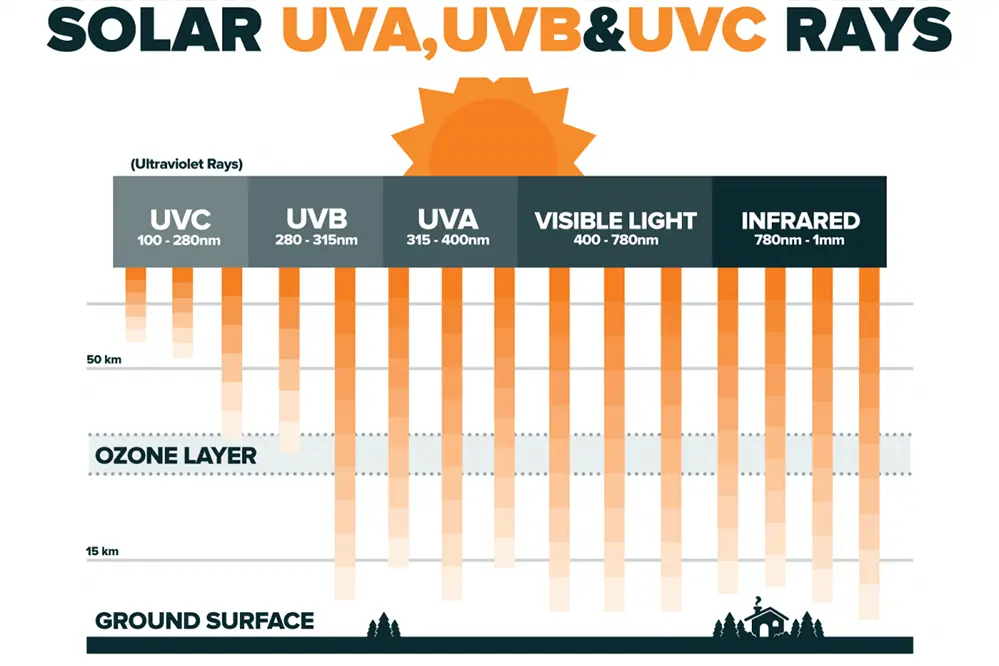“Technology is best when it brings people together,” said Matt Mullenweg, and this rings especially true when considering smart home technologies. The debate of Z-Wave vs Zigbee vs WiFi, which is best for your home, is crucial for anyone looking to create a connected and harmonious living space. Each technology offers unique benefits that can transform your daily life.
Smart home technology impacts various aspects of our lives, from enhancing security and energy efficiency to providing unparalleled convenience. The right system can streamline your routines, making your home more responsive and intuitive. Understanding the differences between Z-Wave, Zigbee, and WiFi is essential for optimizing your smart home setup.
Ready to dive deeper into the world of smart home technologies? This guide will provide you with the knowledge and insights needed to make an informed decision. Let’s explore the best options for creating a smart home that truly meets your needs.
Understanding Smart Home Technologies
Smart homes thrive on compatibility, efficiency, and seamless integration.
To make informed decisions, one must understand the nuances. The choice between Z-Wave, Zigbee, and WiFi depends on various factors, such as device interoperability, network range, power consumption, and ease of installation. Additionally, adjustments to your home’s existing infrastructure can significantly influence your final decision.
Smart technology reliability is essential.
Z-Wave offers excellent device compatibility through its rigorous certification process. With over 3,000 certified products, it ensures smooth interactions between devices of different brands. Zigbee, while initially facing interoperability challenges, has evolved with the Zigbee 3.0 standard, improving compatibility and attracting manufacturers worldwide.
WiFi stands out for simplicity and accessibility, eliminating the need for hubs. Supported by major smart speaker platforms, it provides an easy entry point for beginners. However, for those seeking a more robust, flexible automation ecosystem, exploring multi-tech hubs enables harmonizing different technologies, empowering you to tailor a smart home that fits your aspirations and lifestyle perfectly.
Z-Wave Overview
Z-Wave’s robust wireless protocol, a hallmark of interconnectivity excellence, shines with vigor. Delivering remarkable range and consistent low-power consumption, Z-Wave devices are ideal for various smart home applications, ranging from lighting to security, ensuring seamless integration and reliable performance throughout your household.
What is Z-Wave?
Z-Wave is a cutting-edge wireless protocol, acclaimed for its superior interconnectivity and reliability. Operating on the 800-900 MHz band, it ensures low power consumption and robust performance.
This low-power mesh network technology was developed in the early 2000s by the Danish company Zensys, and since then, it has been a dependable staple in smart home solutions globally.
Over 3,000 Z-Wave certified products are available worldwide, showcasing its extensive adoption and reliability.
Widely supported by multi-tech hubs like HomeSeer, SmartThings, and Hubitat, Z-Wave guarantees seamless integration of various devices. Its interoperability certification ensures a cohesive smart home environment, minimizing compatibility issues and enhancing user experience.
Z-Wave Product Categories
Z-Wave’s versatility shines through its comprehensive array of smart home products that cater to various automation needs, ensuring a fully connected and efficient system.
From lighting to security, Z-Wave covers numerous categories.
Its low power consumption enables extended battery life, offering a multitude of battery-operated devices as well. This range includes smart light switches, bulbs, and thermostats, guaranteeing innovative solutions for every aspect of your smart home.
Z-Wave further solidifies its presence with an impressive selection of sensors, remote controls, and door locks, augmenting both convenience and security. By integrating water valves and garage door controllers into your setup, you’ll experience a seamlessly cohesive and adaptable smart home environment. Explore the transformative potential of Z-Wave for enhanced everyday living.
Z-Wave Hub Compatibility
Z-Wave is widely compatible, supported by numerous leading multi-tech hubs.
- HomeSeer: Versatile and powerful, ideal for advanced users.
- SmartThings: User-friendly, popular among beginners and seasoned enthusiasts.
- Hubitat: Local control for reduced latency and enhanced privacy.
- Vera: Robust options for both novices and advanced users.
- Wink: Simplified user experience, suitable for straightforward automation.
- OpenZWave: Open source software, broad compatibility and customization.
This expansive support ensures flexibility and adaptability for any smart home project.
Adding a Z-Wave compatible hub is essential for monitoring and control.
Choose a hub that aligns with your automation needs for an optimized smart home experience.
Z-Wave Interoperability
Z-Wave’s interoperability sets it apart, ensuring a cohesive ecosystem across various smart home devices.
- Rigorous Certification: Ensures all Z-Wave products meet stringent compatibility standards.
- Mesh Network: Line-powered devices function as repeaters, enhancing system reliability.
- Consistent Updates: Ongoing updates from hub makers ensure feature integration.
- Broad Adoption: Over 3,000 certified products worldwide, fostering a versatile ecosystem.
The certification process, although initially inconsistent, has greatly improved and is now robust.
Hub manufacturers continually evolve to support the latest Z-Wave features, enhancing user experience.
Z-Wave Availability
Z-Wave products are widely accessible.
Z-Wave devices communicate over region-specific frequencies regulated by governments. In the United States, products utilize the 908 MHz frequency, while in Europe, the 868 MHz frequency is standard. Globally, there are around a dozen frequencies employed. This necessitates that manufacturers create region-specific devices.
Some brands cater to all regions.
Companies like Aeotec and Fibaro offer devices compatible with multiple regions, simplifying global distribution. However, many manufacturers prefer to focus on the US or European markets due to logistical reasons.
The high availability of Z-Wave products, reinforced by robust regional adaptability and a plethora of compatible hubs and software, as of 2023, makes it an excellent choice for diverse smart home applications. This global accessibility ensures that users can craft extensive, versatile systems tailored to their specific needs.
Who Should Choose Z-Wave?
If you’re in the United States or Canada and crave a well-rounded smart home ecosystem, Z-Wave stands out brilliantly with its extensive product offerings.
This technology offers unparalleled compatibility through thousands of certified devices.
Home automation enthusiasts will appreciate the seamless interoperability inherent in Z-Wave’s ecosystem, which functions beautifully through an array of multi-tech hubs and software solutions, ensuring a unified, streamlined user experience.
Furthermore, the supportive infrastructure of Z-Wave’s mesh network alleviates distance issues and enhances reliability, proving indispensable for users wishing to implement a comprehensive, long-term smart home strategy. So for those ready to embrace a sophisticated, enduring home automation environment, Z-Wave remains a compelling, optimal choice.
Zigbee Overview
Zigbee has emerged as a versatile and robust smart home technology, particularly excelling in commercial automation but steadily gaining traction in residential applications. It thrives on low power consumption, making it ideal for various battery-operated devices.
This global accessibility ensures that users can craft extensive, versatile systems tailored to their specific needs.
What is Zigbee?
Zigbee is a forward-thinking smart home technology developed by the Zigbee Alliance in 2003. Operating on the global 2.4 GHz frequency, Zigbee is renowned for its low power consumption and robust connectivity.
Its low power usage allows convenient battery-powered applications, ensuring long-lasting performance.
By employing a mesh network, Zigbee devices communicate effectively, enhancing range and reliability. This mesh network means that mains-powered devices can act as repeaters, strengthening the overall system.
Zigbee’s universality stems from its use of the 2.4 GHz band, ensuring consistent performance across regions. Notably, its interoperability has improved significantly, with the Zigbee 3.0 standard bridging previous compatibility gaps. This makes Zigbee a versatile choice for users seeking a cohesive and scalable smart home solution.
Zigbee Product Categories
Zigbee shines in several product categories.
Zigbee’s wide adoption is evident in smart lighting solutions. Many homes today are equipped with Zigbee-compatible smart bulbs, allowing users to control lighting conditions from their devices seamlessly, enhancing convenience and promoting energy efficiency. Additionally, Zigbee is often the technology of choice for smart plugs and switches.
Door locks improve home security.
Zigbee-powered sensors, such as motion sensors and door/window contact sensors, offer enhanced security possibilities. They seamlessly integrate into your home’s automation system – notifying you of any unusual activity – and support various automation scenarios.
Finally, Zigbee’s excellent interoperability and low power consumption make it ideal for battery-operated devices. From smart thermostats to remote controls, Zigbee devices are versatile and designed to meet the needs of homes worldwide. This technology promises to continue evolving, further solidifying its position in the smart home market.
Zigbee Hub Compatibility
Zigbee is supported by a wide range of popular multi-tech hubs. HomeSeer, SmartThings, Wink, Hubitat, Vera, and more can seamlessly integrate with Zigbee devices, providing ample flexibility for users.
It’s also compatible with Amazon’s Echo Plus.
Other smart speakers can control Zigbee devices via a multi-tech hub. This ensures that Zigbee devices remain versatile and integrated within a comprehensive smart home framework, accommodating the diverse needs of tech-savvy homeowners.
Many hubs have also released their own brand of Zigbee-powered sensors, further simplifying the compatibility process. The broad acceptance and implementation of Zigbee technology mean that users can confidently rely on this network for efficient and interconnected home automation solutions. Its adaptability and standardization have made it a cornerstone of current and future smart home setups.
Zigbee Interoperability
The early years of Zigbee adoption were challenged by the lack of enforced interoperability standards, causing issues across devices.
- The Zigbee Pro standard was introduced in 2007 to improve interoperability.
- Manufacturers had the option to “opt-in” to this standard initially.
- Over time, Zigbee 3.0 has enhanced device compatibility.
- Current Zigbee devices exhibit very good interoperability.
This careful standardization has slowly but steadily increased the number of interconnected Zigbee devices.
As Zigbee 3.0 becomes more ubiquitous, the ecosystem continues to mature, allowing for a more seamless smart home experience.
Zigbee Availability
Since Zigbee operates on the universally-accepted 2.4 GHz band, manufacturers can streamline production and distribution. This helps ensure that Zigbee products can be found across global markets, offering convenience and reliability to users everywhere.
European and Asian companies have led the charge in producing Zigbee devices, often featuring an impressive array of options for smart home enthusiasts.
American manufacturers have been slower to the game but are gradually expanding their offerings. This regional variation ensures a competitive and diverse marketplace.
Many popular brands have embraced Zigbee, increasing the availability of products from notable names such as Philips Hue and IKEA, as well as other trusted companies.
Ultimately, this widespread adoption translates to a rich selection of Zigbee products that can be easily found and integrated into various home setups, providing flexible and scalable solutions for diverse needs.
As the ecosystem grows, the future looks bright for consumers who choose Zigbee for its consistent availability and potential for seamless integration into smart home environments.
Who Should Choose Zigbee?
Zigbee is ideal for those seeking cost-effective, globally-compatible smart home solutions with versatility and robust performance.
- Cost-conscious consumers seeking affordable smart products
- Homeowners preferring strong brand support like Philips Hue, IKEA
- Global users wanting region-independent devices
- Users aiming for low power consumption in battery-operated gadgets
- Tech enthusiasts seeking scalable and flexible systems
Consider Zigbee if you want a reliable, affordable, and easily accessible range of smart devices.
Its universal 2.4 GHz frequency ensures global compatibility, making it a future-proof choice for international users.
WiFi Overview
WiFi’s robust network capabilities have revolutionized smart home automation, making devices easily accessible. Operating on the ubiquitous 2.4 GHz band, WiFi’s broad compatibility ensures that your smart home can benefit from seamless device integration with minimal infrastructure.
While interoperability is not uniform across all devices, WiFi remains the go-to choice for “plug-and-play” simplicity. Setting up is as easy as connecting a new gadget to your network, requiring no additional hubs or complex configurations. For newcomers, the simplicity and wide-ranging compatibility of WiFi make it an inviting entry point into the world of smart home automation.
What is WiFi for Smart Homes?
WiFi smart home devices leverage your existing network to provide convenience and accessibility.
- Broad Compatibility: Works with Amazon, Google, and Apple smart speakers.
- Ease of Use: No hubs required; straightforward app-based setup.
- Extensive Range: Utilizes your existing WiFi network to cover your entire home.
- Product Variety: From light switches to thermostats, WiFi supports a wide array of smart home products.
This broad compatibility allows seamless integration of various smart devices.
Setting up WiFi devices is simple, making it ideal for beginners in smart home automation.
WiFi Product Categories
WiFi-supported devices span across a multitude of categories, providing extensive options for smart home enthusiasts.
First and foremost, lighting solutions are a prominent WiFi product category, including smart bulbs, switches, and plug-in switches. These devices, managed via user-friendly apps, offer flexible control over lighting schedules and ambiance settings. Whether you’re at home or away, managing your lighting is as convenient as a few taps on your smartphone.
Security is another vital category within the WiFi product ecosystem. WiFi cameras, doorbells, and locks empower homeowners with real-time monitoring and control of their property. These devices not only enhance security but also integrate seamlessly with existing WiFi networks for accessible and reliable protection.
Finally, home comfort and resource management benefit from a variety of WiFi-enabled devices, including thermostats, irrigation controllers, and appliances. These advanced products adapt to your lifestyle while optimizing energy use and convenience. By integrating with smart speakers and home assistants, they ensure that every aspect of your home environment is finely tuned to your preferences.
WiFi Hub Compatibility
WiFi technology boasts comprehensive support across major smart speaker platforms.
- Amazon Alexa: Natural voice control and seamless integration.
- Google Assistant: Intuitive commands and broad compatibility.
- Apple HomeKit: Secure and user-friendly ecosystem.
A multi-tech hub isn’t necessary for basic functions, but it enhances automation capabilities.
Integrating a multi-tech hub can provide sophisticated and flexible smart home management.
WiFi Interoperability
The landscape of WiFi smart home devices is comprised of multiple ecosystems.
One significant player, Tuya, powers thousands of products through its comprehensive IoT platform.
However, the majority of WiFi devices are tied to specific companies and their proprietary integration APIs.
These APIs often do not communicate with each other, creating isolated ecosystems within the broader WiFi-enabled smart home realm.
Despite this, many companies provide integrations with Amazon, Google, and Apple smart speakers.
WiFi Availability
WiFi operates on the universally-accepted 2.4 GHz band and utilizes your home’s existing router, ensuring a streamlined integration process into existing internet infrastructures.
Thanks to this universal band, WiFi devices maintain a consistent level of interoperability.
WiFi stands out because devices can be found almost anywhere, from local stores to online.
This universality makes it easy for consumers worldwide to enhance their homes with smart technology.
Being globally available, WiFi presents an uncomplicated pathway for individuals new to smart home setups, requiring minimal extra components for operational excellence.
Simply install the device, connect to your home network, download the app, and you are ready to revolutionize your home experience.
Who Should Choose WiFi?
If you desire a quick and straightforward smart home setup, WiFi holds the keys. Simplicity and accessibility make WiFi an attractive entry point for beginners. Its wide range of compatible devices means you can start small and easily expand.
Once configured, WiFi supports seamless control via Amazon, Google, and Apple smart speakers. It’s ideal for those who want an intuitive and hassle-free experience. Set-up often requires just a few steps, letting you enjoy the benefits of smart technology almost instantaneously.
For renters or temporary living situations, WiFi is unparalleled in flexibility. You won’t need specialized hubs intruding into your space, making it a minimalist’s dream. Rely on your existing network and envision upgrades without permanence or complexity.
WiFi networks are particularly advantageous for those who prioritize cost-effective solutions. Without the need for additional hubs, the expenditure remains manageable. Many devices come at a lower price point compared to other technologies.
WiFi shines in its global compatibility and ease of procurement. A broad spectrum of products from various manufacturers dwells within your reach, ensuring you don’t have to navigate through restricted availability. Purchase, install, and innovate—worldwide accessibility cannot be overstated.
Whether you’re dipping your toes or diving deep, WiFi’s ease of use is incomparable. Expand your smart home ecosystem gradually, knowing that robust support and adaptability are just an app away.
Which Technology is Best for Your Home?
Determining the best technology for your smart home hinges on specific needs and preferences of each household.
For those seeking extensive device options and robust interoperability, Z-Wave emerges as a compelling contender. Its dedicated frequencies and exceptional mesh networking capabilities position it firmly as a highly reliable solution.
Despite its higher initial cost, Zigbee stands out for its affordable device range and universal 2.4 GHz frequency. Its continuous improvements in interoperability make it a promising choice for forward-thinking users.
WiFi offers unparalleled convenience, especially for smart home newcomers. No additional hubs are required, and the vast availability of WiFi devices makes it an accessible option for everyone.
Ultimately, combining different technologies with a multi-tech hub can yield the most flexible and comprehensive smart home solution.
Conclusion
When selecting the optimal technology for your smart home, it’s essential to consider your unique requirements and objectives. Z-Wave stands out for its extensive device options and exceptional reliability, making it the preferred choice for those seeking a robust mesh network. On the other hand, Zigbee offers a broader and more affordable selection of devices, despite the higher initial costs. WiFi, while simplifying the entry into smart home automation, tends to offer limited automation capabilities. Each technology has its strengths, and understanding these can help you make an informed decision.
To maximize the potential of your smart home setup, leveraging a multi-tech hub can seamlessly integrate the advantages of Z-Wave, Zigbee, and WiFi. This holistic approach allows you to create an intelligent and adaptable environment tailored to your specific needs. By thoughtfully selecting and combining these wireless options, you can ensure your smart home remains state-of-the-art, providing unparalleled convenience, security, and efficiency. Embracing this strategy will empower you to achieve a truly connected and harmonious living space.





